Mole Removal
Conveniently Located to Serve the Dallas, Fort Worth, Collin, and Denton Counties.
Conveniently Located to Serve the Dallas, Fort Worth, Collin, and Denton Counties.
Conveniently Located to Serve the Dallas, Fort Worth, Collin, and Denton Counties.
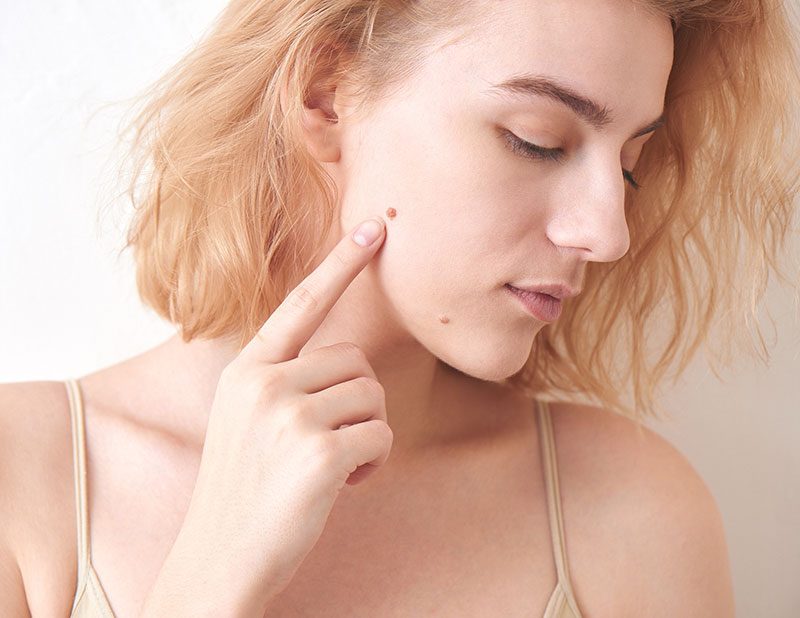
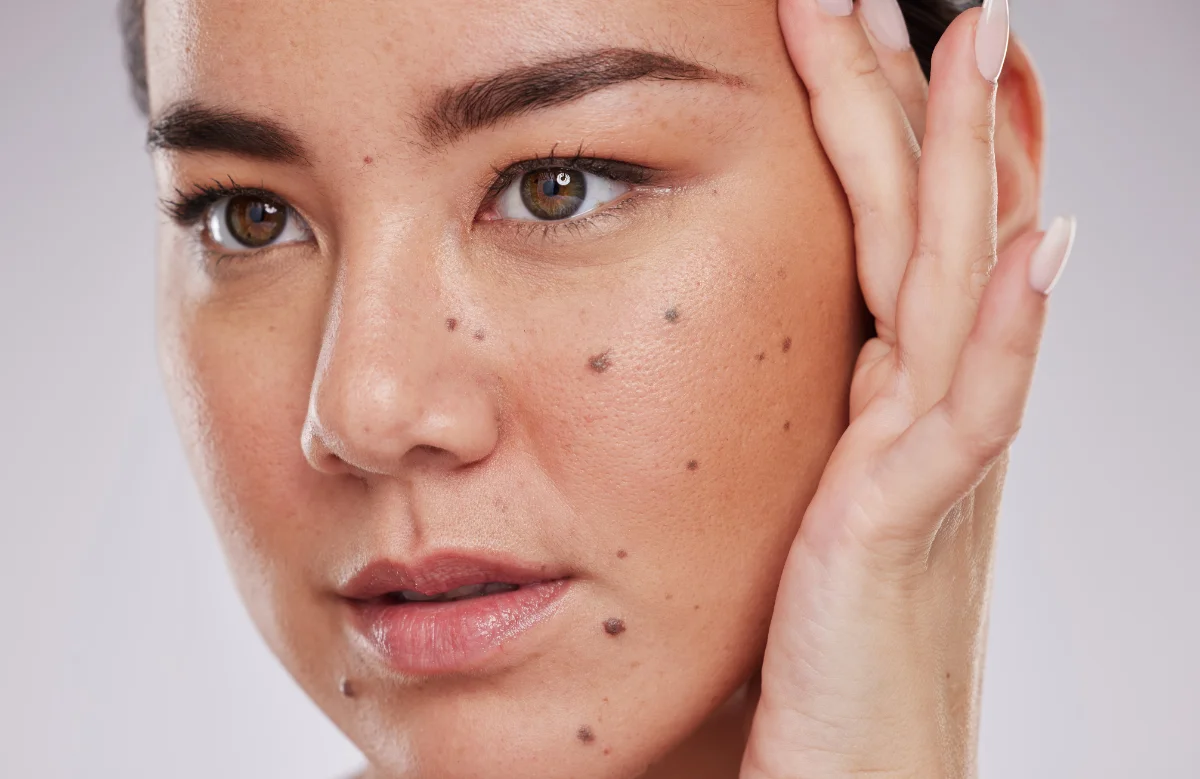

What is mole removal?
Mole removal is the removal of a growth on the body for either cosmetic or medical reasons. Moles can be removed from a variety of different body areas and with a variety of different techniques. As facial plastic surgeons, we specialize in removing moles on the face, neck, and scalp.
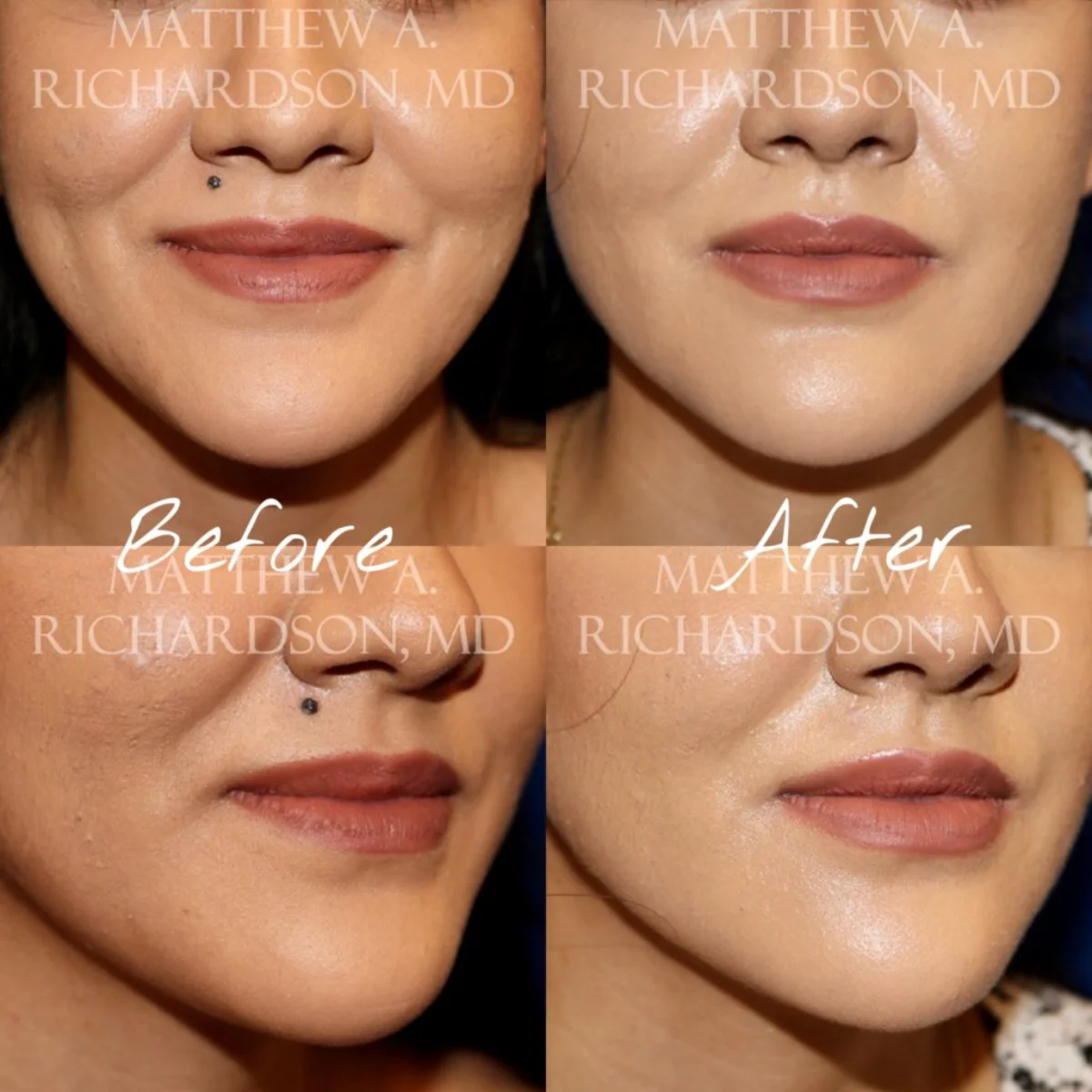
As facial plastic surgeons, we are very aware of all cosmetic concerns within the face, neck, and scalp. Many patients are bothered by growths on their skin that are very noticeable and unattractive. We commonly remove these lesions and do so in a cosmetically-pleasing fashion. In some cases, if there is concern for a possible skin cancer, we will recommend that we remove the lesion in such a way that it can be sent for analysis under the microscope by the pathologist. This is known as a skin biopsy and can be performed with a punch, wide excision, or shave excision, depending on the lesion, concern for cancer, and location. Most insurance plans will cover any biopsies or pathology fees that are associated with removing a suspicious lesion.
We also commonly remove growths on the face and neck simply for cosmetic purposes. If you are concerned about a lesion on your face or neck, let us take a look and determine if there is a need for a biopsy or if we could remove the lesion in such a way as to make it much more aesthetically-pleasing to the eye.
How is a mole removed? What happens during mole removal? What are the different ways to remove a mole? What are the different types of mole removal?
In almost all cases, a mole is removed under local anesthesia. Once the area is totally numb, we can remove a facial or neck mole with either an excision technique or a shave technique. With a shave or cautery technique, the risk of visible scarring is much lower, and the recovery is typically easier. The biggest downside of the shave or cautery technique is that the risk of mole recurrence is higher.
With a full-thickness skin excision to remove a mole, The skin containing the mole and a small margin of normal skin around the mole are both removed. The wound is then closed (usually in layers) with sutures (stitches) in order to allow the area to heal with a good cosmetic result. The upside of this technique is that the recurrence risk is much lower (almost zero), but the risk of a visible scar is higher. The goal is to minimize any scarring, but any time the skin is cut, there will be a scar of some kind.
How is mole removal different from a biopsy?
In some cases, mole removal may play the same role as a biopsy. We can remove the mole and send the tissue to the pathologist to examine under the microscope and rule out problems like skin cancer. A biopsy is designed only to get a diagnosis. A biopsy generally does not do a good job of removing a lesion for cosmetic purposes, or even fully removing a lesion at all. When a biopsy is performed, usually only a piece of the nevus, lesion, or mole is removed in order to obtain a diagnosis, and the remaining amount is left behind. With mole removal, we are trying to remove the lesion entirely, either for cosmetic, functional, or medical reasons.
Is mole removal painful?
When we perform mole removal, we usually perform this under local anesthesia (numbing injections). The numbing injections do sting and burn for a short period of time (usually just a few seconds), and then the area is totally numb while we work. After the procedure, there may be some mild soreness for a few days, but generally pain is very mild after mole removal.
If patients, prefer, sedation or general anesthesia are an option, but these do involve additional risk and expense, and are generally not needed unless patients are very anxious. General anesthesia may be required for small children.
What can I expect after mole removal? What is the downtime and recovery after mole removal?
After mole removal, patients can expect some mild soreness for a few days. Generally acetaminophen or ibuprofen are adequate to control any mild pain. Some patients may be required to take oral antibiotics to prevent infection. Patients are instructed to avoid working out or physical exertion for two weeks after the procedure if a full-thickness excision is performed. If a shave or cautery technique is used, recovery times are shorter, and are generally limited to one week of down time. The wounds will generally start out pink or dark in color and will take many months to fully fade to match the surrounding skin tone. We ask patients to avoid sun exposure and use a protective scar cream while in the healing phases.
What are the contraindications to mole removal?
Patients on blood thinners, with clotting disorders, or wound healing problems may not be candidates for mole removal, especially for cosmetic purposes. If a lesion needs to be removed for a diagnosis or due to skin cancer, some risks may be worth taking in order to avoid bigger problems for the patient.
Is mole removal safe for all skin types, ethnicities, and races?
Yes, mole removal is safe for everyone, but patients with darker Fitzpatrick skin types will be more likely to have issues with either discoloration of their scars or with hypertrophic (overactive) scar tissue. Luckily, keloid scars and other types of hypertrophic scars are not common on the face, but they can appear commonly on the neck, ears, and scalp.
When should I get a mole removed?
Moles should be removed for cosmetic purposes whenever they are affecting a patient’s self-esteem or concerning to the patient for some reason. Children and young adults should usually be mature enough to make a decision regarding the lesion themselves (with parental approval). Moles that are changing, darker in color, irregular, bleeding, asymmetric, or otherwise concerning in some way should be examined as soon as possible in order to determine the need for either a biopsy or an excision.
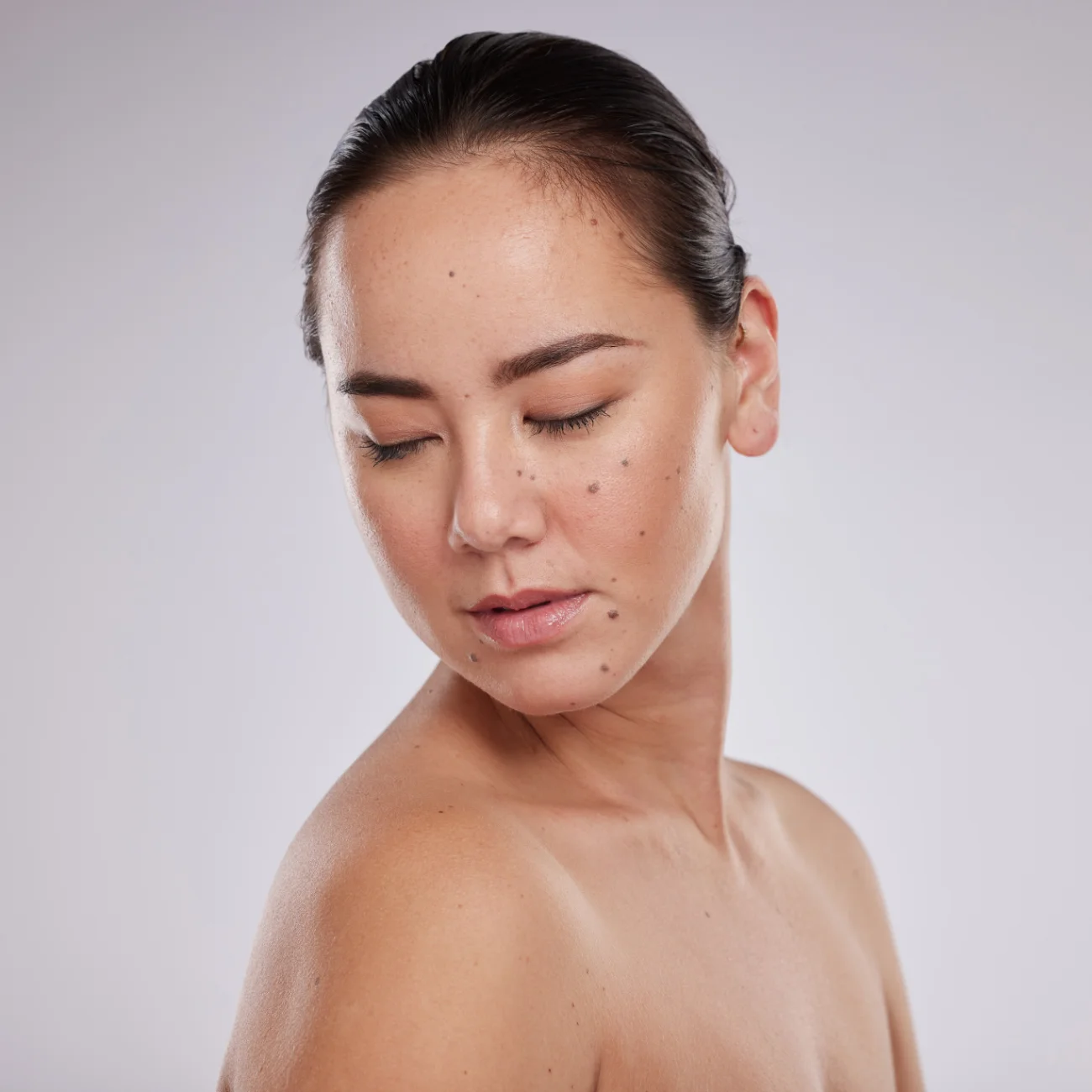
“Entire Team is Phenomenal”
“Great Experience. I had a mole removed between my nose and upper lip which is often a very complicated area to work with and Dr. Matthew Richardson did a fantastic job. Dr. Matthew Richardson and his entire staff are attentive and kind individuals. This was the first procedure I have ever done, and they all made feel comfortable since the first day I walked in. If you are searching around for someone who does mole excisions I 100% would recommend him. The entire team is phenomenal.”
(REALSELF)
Is mole removal only for women?
No, mole removal is for both men and women, children and adults, young and old.
Who is qualified to perform mole removal? What kind of doctor removes moles?
Mole removal might be performed by a variety of different medical specialties, including facial plastic surgery, plastic surgery, dermatology, family practice, general surgery, and others. As facial plastic surgeons, we have dedicated our careers to facial surgical procedures, and are experts at facial anatomy, beauty, and aesthetics. We believe we are uniquely qualified to remove moles on the face, neck, and scalp in a safe manner with excellent cosmetic outcomes.
Is mole removal safe?
Yes, in general, mole removal is very safe. Every procedure has risks. With mole removal, the risks are generally bleeding, scarring, infection, or recurrence of the mole. Other very rare things like nerve injury or prolonged pain are possible but highly unlikely. The biggest issues with mole removal tend to be the risks of recurrence (mostly with shave or cautery techniques) or with visible scarring (mostly with excision techniques). Shave or cautery techniques can leave a discolored area, but generally won’t leave large linear scars.
Does mole removal leave a scar?
In some cases, yes there is a visible scar after mole removal. Usually the scar is less visible and noticeable than the mole itself. True surgical scars are most common with excisional techniques. The patient’s skin tone may play a factor as well. Flesh-colored lesions on fair-skinned patients tend to hide scars much better than dark lesions on patients with darker skin tones. Excisional techniques will ALWAYS leave a scar, but we try to make the scar as minimal as possible. Some shave or cautery techniques might not leave a scar at all, while others (in certain patients) might leave a discolored (darker or lighter than the surrounding skin) area.
How long does mole removal last? Is mole removal permanent?
Ideally, yes, mole removal is permanent, but we know that there is some risk of recurrence. The risk of recurrence is highest with shave or cautery techniques where the full thickness of the skin is not removed. This is a risk that is often worth taking for the potential benefit of a less visible scar and a better cosmetic result. Mole recurrence after full thickness excision is possible, but very unlikely.
Will I look different after mole removal?
Yes, the mole will be removed. There might be a scar in place of the mole. Generally the scar (if present) will heal well and be less noticeable than the mole.
How much does mole removal cost?
We create a custom quote for each patient depending on the number of lesions we are removing, where they are located, how large they are, and what techniques we are using (shave or cautery vs full-thickness excision). All of these factors play a role in the cost of the procedure. In our practice, follow up visits for cosmetic lesion removal are included in the cost of the procedure. Mole removal costs can vary widely and start at $495 per lesion, all the way up to several thousand dollars, depending on those factors listed above.
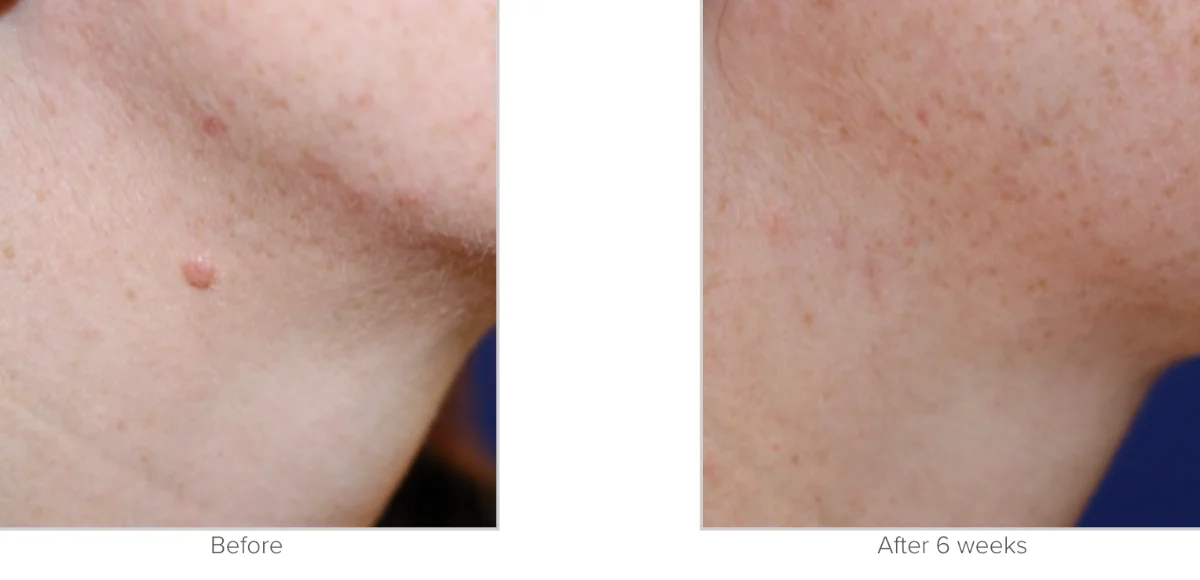
*Individual Results may vary.
Real Patient Photo Gallery
View before-and-after pictures of real patients
How can I set up a Mole Removal Consultation?
Call or text Texas Facial Aesthetics at 469-362-6975 to set up a consultation with either Dr. Matthew Richardson or Dr. Jordan Cain. You can also email us at info@txfaces.com for more information.
